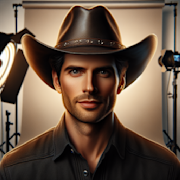City of God (2002)

Films have the power to transport us to different times and places, allowing us to explore worlds we may never have known otherwise. City of God, directed by Fernando Meirelles and Kátia Lund, is one such film that immerses its audience in the ruthless and dangerous world of Rio de Janeiro’s favelas. Through its gritty storytelling and powerful performances, City of God takes viewers on a journey through the harrowing realities of life in the slums, where poverty, crime, and violence reign supreme.
The Setting: Rio de Janeiro’s Favelas
At the heart of City of God is its setting: the favelas of Rio de Janeiro. These impoverished and densely populated neighborhoods are notorious for their high levels of crime and violence, as well as the lack of government presence and basic services. The film paints a stark and unflinching portrait of life in these favelas, where drug lords rule with an iron fist and children are forced to grow up far too quickly.
The filmmakers went to great lengths to accurately depict the favelas, using a combination of professional actors and actual residents to bring the story to life. This authenticity adds a layer of depth and realism to the film, making it all the more impactful for viewers.
The Characters: Complex and Compelling
City of God features a wide array of characters, each with their own motivations, struggles, and moral dilemmas. At the center of the story is Rocket, a young aspiring photographer who navigates the dangerous streets of the favela while trying to stay true to himself. His journey serves as a lens through which the audience can experience the chaos and brutality of life in the favelas.
Other notable characters include Lil’ Ze, a ruthless and power-hungry drug lord who will stop at nothing to maintain control, and Benny, Rocket’s charismatic friend who finds himself caught up in the violence of the favela. The film’s ensemble cast delivers compelling performances that bring these characters to life in a way that is both raw and authentic.
The Story: A Tale of Survival and Redemption
City of God weaves a complex and gripping narrative that follows the lives of its characters as they navigate the treacherous landscape of the favela. As Rocket documents the chaos around him through his camera lens, the audience is taken on a rollercoaster ride of emotions, from heartbreak to triumph and everything in between.
The film explores themes of survival, redemption, and the cyclical nature of violence, offering a nuanced and thought-provoking look at the human experience in the face of adversity. Through its powerful storytelling and unforgettable characters, City of God leaves a lasting impact on anyone who watches it.
The Legacy: A Cinematic Masterpiece
Since its release in 2002, City of God has garnered critical acclaim and a dedicated fan base, solidifying its status as a cinematic masterpiece. The film’s bold visual style, compelling performances, and visceral storytelling have cemented its place in the pantheon of great films, earning it a spot on countless “best of” lists and awards.
But beyond its critical success, City of God has also had a lasting impact on popular culture, influencing countless filmmakers and artists with its bold and uncompromising vision. Its legacy lives on in the many works of art that have been inspired by its powerful storytelling and unflinching portrayal of life in the favelas.
In conclusion, City of God is a film that demands to be seen. Its raw and gritty depiction of life in the favelas is as relevant today as it was when it was first released, offering a stark reminder of the harsh realities faced by millions of people around the world. Through its unforgettable characters and powerful storytelling, City of God cements its place as a cinematic masterpiece that will continue to captivate audiences for years to come.

Alberto Miller
Movie Fanatic
More From Classics Authority Movies

Movie
The Timeless Elegance of Classic Movie Poster Art

Movie
Easy Rider (1969)

Movie
White Heat (1949)

Movie
The Artist (I) (2011)

Movie
The Thing (1982)

Movie
The Unforgettable Music Scores of Classic Movies





